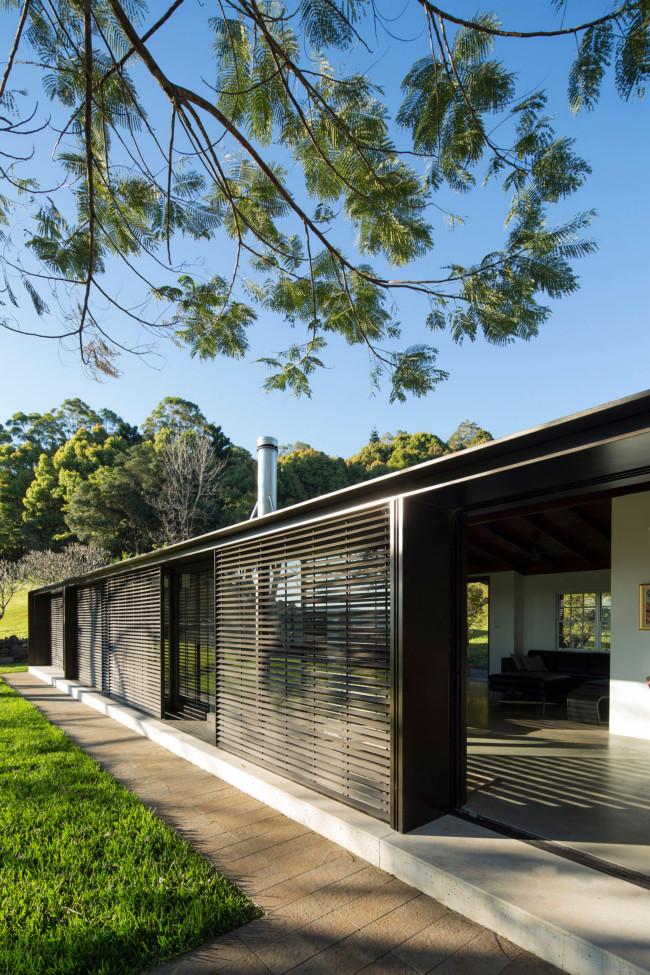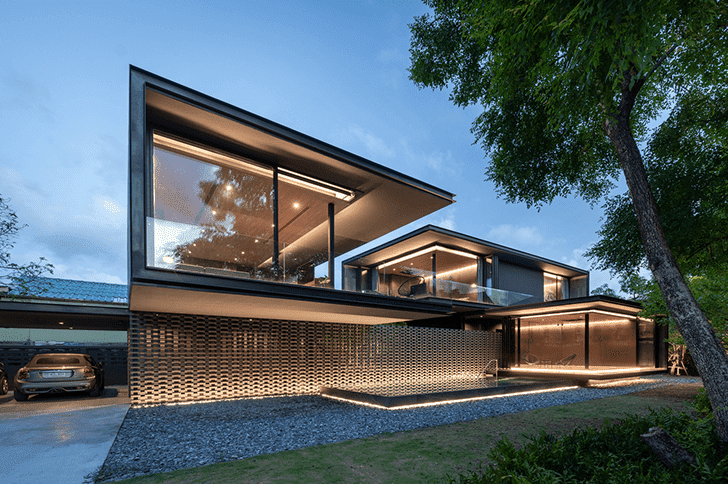Residential Interior Architect: Specialized Design Services for Beautiful Living Spaces
Wiki Article
Top Fads in Residential Architecture You Need To Understand About
As residential style continues to advance, a number of engaging trends are forming the way we create and inhabit our living areas. Secret developments such as lasting building methods, the assimilation of smart home modern technology, and the rise of modular homes highlight a significant shift towards both capability and environmental obligation. In addition, concepts like open strategy living and biophilic design are redefining our interaction with area and nature. Recognizing these trends not only notifies design options yet also exposes more comprehensive effects for lifestyle and neighborhood - residential house architect. What might these innovations indicate for the future of property living?
Sustainable Building Practices
A boosting variety of household tasks are welcoming lasting building methods, driven by a growing understanding of environmental impact and energy efficiency. This shift is identified by the assimilation of environment-friendly products, energy-efficient designs, and innovative building and construction methods. House owners and building contractors are significantly focusing on using renewable energies, such as bamboo and recycled metals, which not just lower the carbon impact however also enhance the resilience and aesthetic allure of residential properties.Including energy-efficient systems is another essential facet of lasting structure - residential house architect. Functions such as high-performance insulation, energy-efficient windows, and photovoltaic panels are coming to be criterion in new household styles. These components not just contribute to reduced power usage but additionally supply significant lasting cost savings for house owners
Furthermore, the layout of lasting homes typically highlights natural light and air flow, decreasing the dependence on synthetic lights and climate control systems. Landscape design methods, such as xeriscaping, further advertise sustainability by lessening water usage.
As the need for sustainable living solutions proceeds to climb, the household architecture market is positioned to introduce and adapt, making sure that future homes are not just ecologically liable but practical and additionally comfortable for their residents. - residential house architect
Smart Home Modern Technology
Smart home technology is transforming the means property owners engage with their home, enhancing comfort, security, and energy monitoring. This innovative approach integrates different gadgets and systems, enabling individuals to regulate their homes from another location or via automated procedures. Central to this fad is the usage of clever tools such as thermostats, lighting, security video cameras, and home appliances, all attached via the Internet of Points (IoT)Among one of the most appealing attributes of clever home technology is the capacity to customize setups for optimum power effectiveness. Home owners can check power use and change heating, lighting, and air conditioning based upon their routines, substantially minimizing utility costs. In addition, innovative protection systems furnished with clever locks and security cams offer peace of mind, allowing remote tracking and signals to prospective security breaches.
Integration with voice-activated assistants improves individual experience, enabling homeowners to control tools with straightforward voice commands. As modern technology remains to advance, the capacity for smart home systems to enhance lifestyle expands, making them an essential consideration in modern-day property architecture. Inevitably, smart home innovation is not just a trend however a basic shift toward a lot more smart living environments.
Open Principle Living
Open up concept living has arised as a specifying feature in modern household architecture, defined by the elimination of traditional barriers between spaces. This design viewpoint promotes fluidness and connection within the home, allowing for a seamless shift in between locations such as the kitchen, eating, and living areas. By eliminating dividings and wall surfaces, open concept formats develop a sense of spaciousness, fostering an inviting atmosphere that enhances social interaction.
Furthermore, this approach to household style straightens with minimalism, concentrating on useful simplicity and visual coherence. Home owners appreciate the convenience of these designs, which can be conveniently adapted to mirror personal style via furniture setup and decor. As open concept living remains to gain traction, it continues to be a testament to evolving household characteristics and the need for homes that enhance link and comfort.
Biophilic Style
Biophilic style has come to be increasingly considerable in residential design, emphasizing the inherent connection between human beings and nature. This layout approach seeks to incorporate all-natural elements right into living spaces, thus promoting a sense of health and enhancing the quality of life for occupants. By including functions such as natural light, plants, and organic products, biophilic style promotes an unified connection between indoor environments and the natural globe.Trick aspects of biophilic style consist of big windows that supply unobstructed views of outside landscapes, living walls that introduce plant into interiors, and open layout that urge air flow and natural light infiltration. Water features, both within and outside the home, serve to develop soothing environments and enhance sensory experiences.
In addition, making use of lasting materials not only sustains environmental stewardship however also adds to much healthier indoor air high quality. As recognition of environmental issues increases, house owners are progressively focusing on layouts that reflect their connection to nature. Essentially, biophilic design not just elevates visual appeal yet also addresses emotional and mental requirements, making it an essential pattern in modern domestic architecture.
Modular and Prefab Homes

Moreover, prefab and modular homes are designed with sustainability in mind. Several makers use environmentally friendly materials and energy-efficient systems, such as solar panels and progressed insulation strategies, adding to lowered power usage and reduced energy bills for property owners. The versatility of style options enables modification, providing to diverse visual preferences and practical demands.
As the need for budget friendly housing remains to increase, modular and prefab homes offer a practical solution, dealing with both economic and environmental difficulties. Communities are significantly identifying the possibility of these frameworks, incorporating them right into rural and urban setups. Generally, the fad towards prefab and modular homes signifies a change toward much more sustainable, effective, and versatile living environments, making them an essential aspect of contemporary household design.
Conclusion
Sustainable building techniques and smart home modern technologies boost efficiency and convenience, while open principle living and biophilic style foster social communication and a link to nature. The rise of modular and prefab homes supplies personalized and cost effective solutions, reflecting a more comprehensive shift in the direction of useful and accountable living.Key advancements such as lasting building practices, the assimilation of wise home innovation, and the increase of modular homes highlight a substantial shift towards both performance and environmental obligation.The rise of modular and prefab homes has changed the household style landscape, supplying innovative solutions for effective and sustainable living.Furthermore, modular and prefab homes are developed with sustainability in mind. Overall, the trend toward modular and prefab homes represents a change towards extra sustainable, efficient, and versatile living settings, making them a critical facet of modern property design.
Lasting building techniques and clever home innovations improve effectiveness and benefit, while open principle living and biophilic design foster social interaction and a link to nature.
Report this wiki page